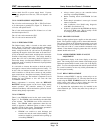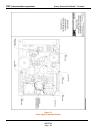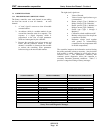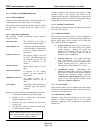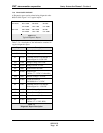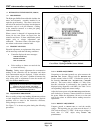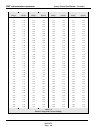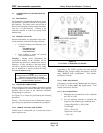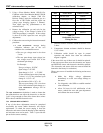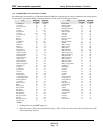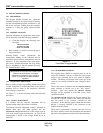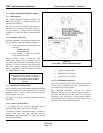
SMC sierra monitor corporation Sentry Instruction Manual - Version 6
SERVICE
Page: 67
To adjust the sensitivity apply 20 ppm hydrogen sulfide
for five minutes for full stabilization. (Check that the
voltage drops by at least .3 volts during this time.) Adjust
the signal out value to .6 VDC using the range adjust
potentiometer. Remove gas and verify that the voltage
climbs to above 1.0 VDC in five minutes.
7.4.4 SENSOR REPLACEMENT
If either of the above adjustments cannot be completed
successfully the sensor and/or electronics will require
replacement. To check the sensor unplug it from the
electronics and remove from the housing so that continuity
and resistance tests can be made. Table 7-3 provides the
pin out for the sensor assembly.
PIN FUNCTION WIRE COLOR
1 SENSOR FILM GREY
2 HEATER RED
3 HEATER RED
4 SENSOR FILM GREY
5 CALIB. SW. GREEN
6 CALIB. SW. GREEN
Table 7-3
Hydrogen Sulfide Sensor
Wiring Pin-Out
1. Sensor Film resistance (grey wires) should be
above 10K ohms.
2. Heater resistance (red wires) should be between
20 and 35 ohms.
3. Calibration switch (green wires) should be open
in normal operation and should close when the
calibration magnet is applied.
If the sensor fails any of these tests it should be replaced.
If the sensor passes these tests the electronics are suspect
and BOTH the sensor and electronics should be replaced.
(The failed components should be returned to the factory
for evaluation).
When a new sensor is installed the following actions
should be taken:
1. Input new factors into controller. The factors are
written onto the sensor connector label. (Three
numbers: ###-###-###)
2. Make a preliminary power adjustment to insure heater
is below 400 mW.
3. Force calibrate the sensor module.
4. Wait 24 hours for stabilization of the sensor film.
5. Make the power and sensitivity adjustments as
described above.
6. Calibrate the sensor.
7.4.4.1 H
2
S MODULE HEATER VOLTAGES
Table 7-4 may be used during adjustment of Hydrogen
Sulfide sensor heater voltages. Make small adjustments to
the Heater Adjust potentiometer until the corresponding
Heater Voltage and Heater Current readings are obtained.
Both values are read as voltages.



